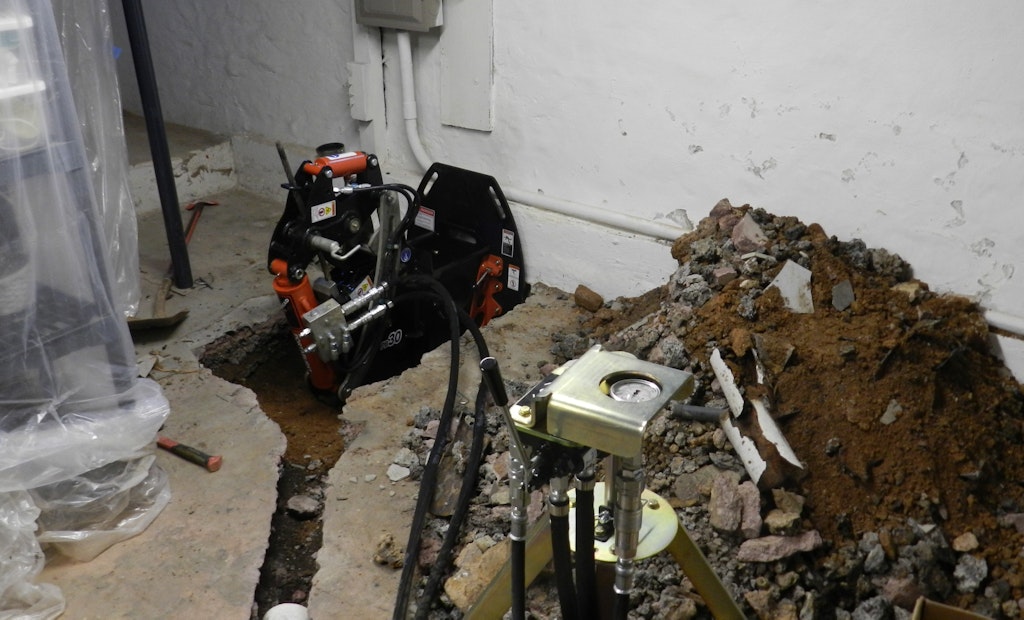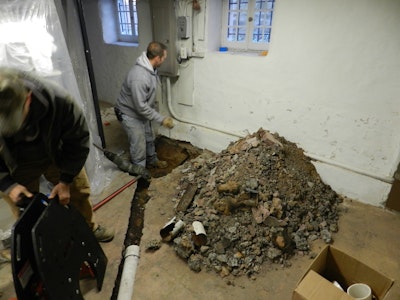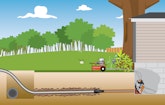
Interested in Relining/Rehab?
Get Relining/Rehab articles, news and videos right in your inbox! Sign up now.
Relining/Rehab + Get AlertsInflow and infiltration (I&I) of stormwater into a city’s sanitary sewer system can be a major problem. King County, Wash., estimates that I&I makes up 75 percent of its peak flows during the winter, and much of that comes from private property.
In any location with an aging sewer system, the rising volume of I&I can require new and larger wastewater facilities to convey and treat larger flow volumes. That means higher capital expenditures, often to the tune of millions of dollars.
Much of the inflow comes from sanitary laterals on private properties, but the homeowners own those laterals. In Wisconsin, a number of municipalities have discovered a solution to this problem, requiring homeowners to replace the lateral on their property.
Ordinances create solutions
When certain Wisconsin municipalities replace a sewer main or street, homeowners are required by city ordinance to replace the connecting lateral into their house. It amounts to a one-time tax, which averages $2,000 to $3,000. But the homeowner gets the security of knowing that the sewer lateral has been replaced with a leak-free pipe that will last 50 years or more. Municipalities can also offer extended payment plans for the cost of the lateral.
Since 2006, Kimberly, Wis., has replaced 450 to 500 laterals, says Dave Vander Velden, street commissioner. “We’re trying to eliminate inflow and infiltration,” he says. “Our program consists of replacing mainline sewers in the street, and with that, the laterals that are not Schedule 40 pipe or HDPE pipe. If it’s not plastic, our ordinance requires it to be replaced.”
Most of the laterals in the older areas of the village are 6-inch clay pipe, with some cast-iron. Early on, the sewer line replacement contractors did mostly sliplining, but in recent years pipe bursting has taken over. “There are more contractors that have the equipment to do it,” says Vander Velden.
“A lot more towns and villages are trying to reduce I&I, so there are a lot more people replacing laterals. With our old programs, we would replace the mainline pipe but did not replace the laterals. Then we’d test them and find that we did not really reduce the inflows.”
Most homeowners elect to replace the lateral when the mainline sewer contractor is replacing the main. “That way they’re getting the best bang for their buck from a contractor who is doing multiple laterals as he goes down the line,” says Vander Velden.
“We give them different payment options. They can pay it all when they receive the bill, they can put it on their property taxes for that year, or they can put it on a five-year payment program. With those, we charge one percent interest over the prime rate of our local bank.
“We’ve done these programs in different neighborhoods. We find it very successful.”
Bursting a lateral
Jay Midbon, owner of M&E Construction in Kaukauna, Wis., has experienced the variation in lateral ordinances throughout northeast Wisconsin. With 500 lateral pipe-bursting jobs under its belt, the company has done work for the municipalities of Menasha, Little Chute, Kimberly, Kaukauna, Oshkosh, Neenah, Green Bay and Appleton.
Midbon prefers the HammerHead PortaBurst PB30 pipe-bursting machine. Once a pit is excavated outside, the PortaBurst PB30 is set into the pit and the contractor inserts a cable and pushes it through the old pipe into the house. Then the unit pulls a bursting head and a length of pipe back through the old pipe from inside the house.
“We’ve had real good luck with it so far,” says Midbon. “We pulled all 500 of those laterals with that machine and we haven’t had any issues over the past three years, so it’s been real good for us.”
Similar to the Village of Kimberly, M&E sometimes follows mainline contractors down the road, bursting laterals after the mains are dug. This reduces the number of holes in the street and gives homeowners an option to replace their lateral in one sweep.
I&I advantages
The ordinance in the Village of Campbellsport requires homeowners to replace old non-plastic laterals when the street is being rebuilt, but the village shares the cost with the homeowner. “We have had a program like that for about four years,” says Campbellsport village president Patrick Twohig. “We’re working on the third street project where we have implemented the lateral requirement. When we replace streets, we burst the laterals along that street.”
The village has replaced 15 laterals, all by pipe bursting. “The advantage is that we can offer something at a decent price to the resident of the property and accomplish the goals that we have as a village,” says Twohig. “We replace the laterals because of the infiltration, and we feel that a lot of them along these particular routes are susceptible to failure at some point.”
Replacing the individual laterals while the main is dug up just makes sense for Campbellsport. “We like to have our sewer laterals up to current technology when we resurface a street,” says Twohig. “That way we don’t end up having to cut up the street to replace a lateral after we have just done the street resurfacing. We share the cost with the property owner. We take care of the area up to the right of way and the property owner is responsible from the basement out to the right of way.”
Twohig says a lateral replacement typically costs $1,800 to $2,000 in Campbellsport.
Pipe bursting laterals offers mutual benefits for homeowners and the village because the village helps stop I&I. “The advantage a homeowner gets is a pipe that should be good for 50 years or more down the road at a cost that is much less than what we have seen from people who have to open-cut these laterals,” says Twohig.
“And in general, when we look back at some of these old sewer connections, we can see that they will fail in the not-too-distant future.”
While many municipalities in Wisconsin require homeowners to replace laterals, some towns are considering whether similar programs would be beneficial for their residents.
Policy under review
Neenah, Wis., is one town that does not currently have an ordinance requiring homeowners to replace their laterals when the main is being replaced. “We’re looking at our policy right now and how to offer an incentive for more homeowners to do it,” says Heath Kummerow, an engineer with the city.
“In the last two years about a dozen laterals have been replaced with pipe bursting. We’re thinking of offering some sort of incentive to homeowners to do the work all the way to the house. We might offer a discount or a subsidy.
“There are about five local municipalities around us that require the lateral to be replaced right to the house,” says Kummerow. “They’re required to replace their laterals in a certain timeframe. They’ve been doing every lateral.”
From a municipal standpoint, making lateral replacement a requirement when a mainline is already being repaired is the best practical solution. It results in the least amount of damage and minimal cleanup costs for homeowners.
HammerHead Trenchless Equipment manufactures a full line of trenchless products for the installation or replacement of underground utilities.







